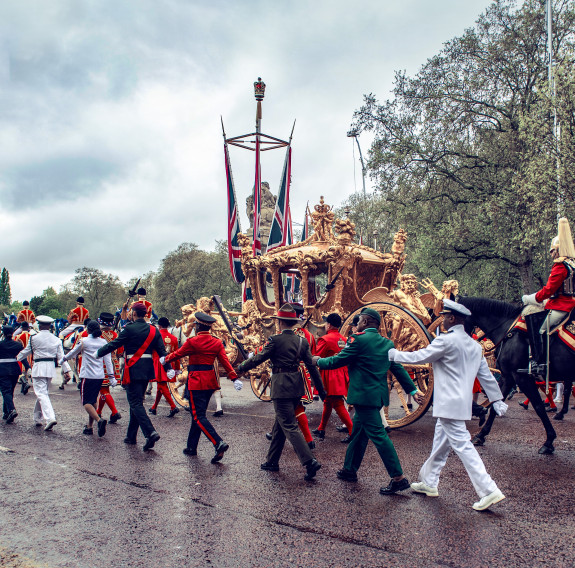Force for New Zealand: 2023 Year in Review
Some stories involving the New Zealand Defence Force during 2023.
15 December, 2023
Cyclone Gabrielle
In February 2023, a violent tropical cyclone devastated the North Island of New Zealand. Cyclone Gabrielle is the costliest tropical cyclone to ever hit the Southern Hemisphere, with total damages estimated to be more than NZ$13.5 billion. We were there, ready at all times to do our part.
130
3SQN responded to more than
130 Search and rescues
The Defence Force's involvement covered the full spectrum of Humanitarian Aid and Disaster Relief, including immediate life-saving rescues of people trapped on rooftops by floodwater. In the aftermath, rural communities in Northland, East Coast and Hawke's Bay found themselves cut off after the destruction of roads, bridges and services, while major centres struggled to cope with infrastructure damage and wrecked homes.
Under the guidance of the National Emergency Management Agency, the Defence Force dispatched three Navy ships to the East Coast and Hawke's Bay, delivering supplies to communities and cities.
The NZ Army made physical in roads to rural settlements, proving routes and delivering fuel, aid and food supplies. The Air Force transported medical equipment and infrastructure to major centres, and made constant runs from Hawke's Bay distribution centres to isolated areas.
45
NZ Army personnel carried out approx
45 evacuations across the East coast
At its height, the NZDF had nearly 1,000 personnel involved, including liaison officers in emergency coordination centres and the National Emergency Management Authority (NEMA), through to evacuations, checking and establishing routes to cut-off communities, delivering critical supplies including water, fuel, food and medical supplies, welfare checks on people, clearing flood damage, and helping individuals with tasks on their properties including restoring drinking water supplies.
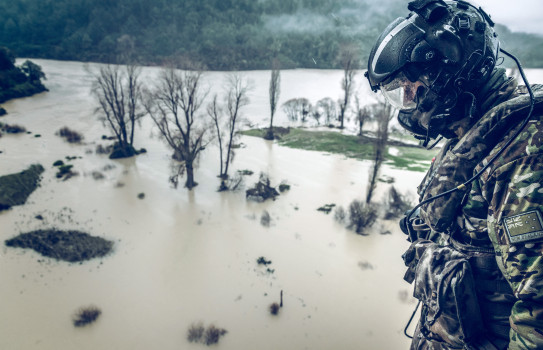
Talisman Sabre hones readiness for combat
In July and August New Zealand personnel proved their worth in working alongside a dozen other militaries during Exercise Talisman Sabre, a large-scale combat exercise in Queensland, Australia. Around 300 New Zealand Defence Force personnel took part in the largest-ever iteration of Talisman Sabre, involving around 30,000 military personnel from 13 countries.
A 150-strong NZ Army combat team, mounted in NZ Light Armoured Vehicles, formed a battlegroup with soldiers from Fiji, Australia, France, and the United States. The combat team used its speed and firepower to clear and destroy enemy defensive positions and seize objectives, to allow the wider battlegroup the freedom to take further action.
Three Royal New Zealand Air Force NH90 helicopters and 50 personnel, including aircrew, aircraft maintenance, safety, communication and information systems, intelligence, medical and logistics, formed part of an Anzac unit contributing to an aviation battle group which supported air mobile operations and troop movements.
A 10-strong Royal New Zealand Navy autonomous underwater vehicle team embarked on expeditionary ship USS Miguel Keith, joining a Royal Australian Navy combined mine counter measures task force. They practised sonar searching of areas to detect mines and provided in-depth underwater examination prior to dive teams being deployed to disarm or destroy the ordnance.
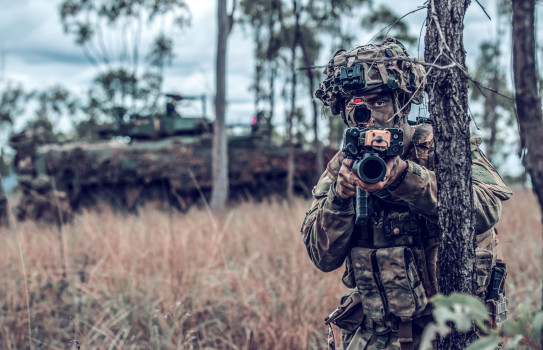
Five Power Partners
In October the New Zealand Defence Force took part in Exercise Bersama Lima, an annual exercise based in Malaysia and Singapore that has run since 1971. More than 400 NZDF personnel, including crew from frigate
HMNZS Te Mana and maritime sustainment vessel HMNZS Aotearoa, were involved alongside Malaysia, Singapore, Australia and the United Kingdom as part of the Five Powers Defence Arrangement (FPDA).
Over the 19 days, Royal New Zealand Navy sailors carried out maritime operations, conducted boarding training and replenishment at sea operations, while New Zealand Army soldiers trained in jungle warfare.
Twenty-eight NZDF staff were based at the headquarters, Joint Warfighting Centre in Kuantan.
The exercise was part of the Operation Crucible South East Asia deployment for Te Mana and Aotearoa, which included port visits to Australia, Singapore, Philippines and Ho Chi Minh City in Viet Nam.
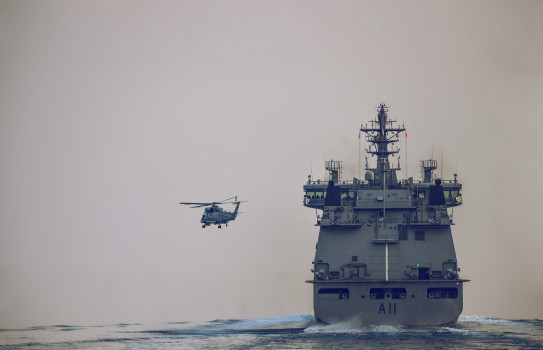
Dropping off in remote locations
In May No. 40 Squadron, flying the C130-H (NZ) Hercules, successfully completed a nearly two-week exercise of tactical flying around the top of the South Island, practising dropping loads of equipment and supplies in remote locations.
The annual training activity is designed to maintain currency in low-level flying, tactical flying and airdrop capability; skills which are crucial when responding to a range of challenging situations when called on by the New Zealand Government.
The Hercules flew as far south as Canterbury and as far north as Manawat, the crew coordinating pallet drops of heavy equipment and container delivery bundles to drop zones at Base Ohakea and around Marlborough.
The exercise provided crews with a range of challenging flying and navigating conditions, including over unfamiliar, mountainous and challenging terrain in a variety of weather conditions.
It helps prepare No. 40 Squadron for deployments to the likes of Antarctica, the Middle East, Asia and the Pacific.
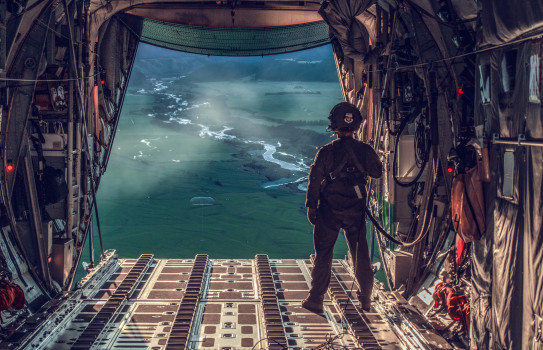
High speed tactical boats
The Royal New Zealand Navy's punchy new long-range high-speed Littoral Manoeuvre Craft tick the boxes between coastal littoral operations and small, fast team tactical insertions over the horizon.
Powered by twin Cummins 550hp diesel engines coupled with Hamilton jets, the three boats are fast, capable of 40-plus knots. The hulls are plastic, constructed of High Density Polyethylene (HDPE), making them highly durable and low-maintenance. They don't need painting and there's no risk of corrosion or degradation from electrolysis.
They can be transported on HMNZS Manawanui, taking the boat and team to an Area of Operations where they can be inserted. The LMC can transport (piggy-back) a 5.3-metre zodiac on its back, meaning the LMC can do a fast, long range transit and drop off a team of divers or hydrographers to cover the last leg. It has capacity for 10 passengers; one of its mission profiles is the ability to carry troops.
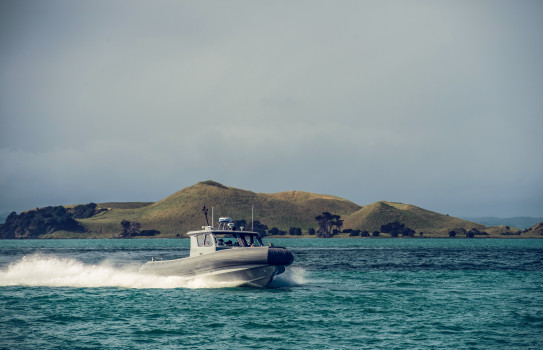
P-8A Poseidons go operational
The first aircraft arrived at Ohakea on 12 December 2022. A custom-built facility, including two hangars, maintenance and support facilities, warehousing for spare parts, and a mission support centre, is under construction at Ohakea. The new fleet replaces the P-3K2 Orion patrol aircraft which have been in service since the 1960s.
On 17 July the fourth and final P-8A Poseidon arrived in New Zealand, just as the No. 5 Squadron fleet become operational on 1 July. It meant the fleet was mission-ready seven months after the first aircraft touched down at RNZAF Base Ohakea.
In October a Poseidon carried out the squadron's first rescue mission with the aircraft, locating three Fijian fishers nine days after they were reported missing aboard their 8.5-metre wooden fishing boat.
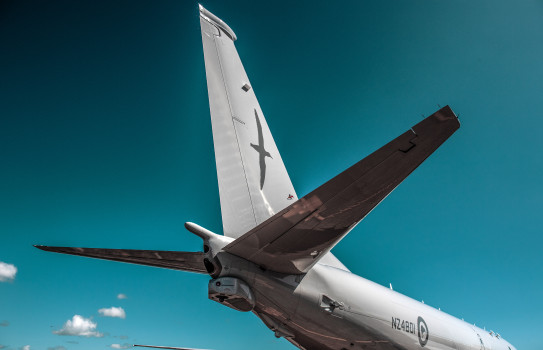
Arrival of the Bushmasters
The Defence Force took delivery of the first 18 Bushmaster protected mobility vehicles for the New Zealand Army in May. The 43 Bushmasters in total are Australian-designed and built vehicles and will replace the New Zealand Army's ageing armoured Pinzgauers.
In December 2017, the Government has invested more than $4.5 billion in 12 major defence capability projects.
This includes $102.9 million towards the Bushmaster fleet.
They carry more troops than the armoured Pinzgauer and offer greater blast and ballistic protection to personnel. The fleet is made up of five variants: 25 troop carriers; 10 command and control; four ambulances; two for logistics, and two for maintenance support.
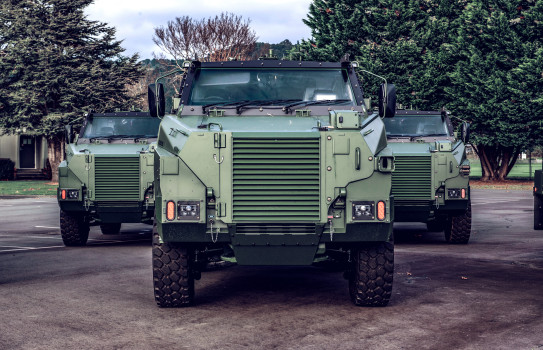
Mountains put aircrew through their paces
The mountainous terrain of Marlborough provides the perfect landscape for Royal New Zealand Navy Seasprite helicopter training.
In August more than 90 people took part in Exercise Bluebird 23, which includes Royal New Zealand Navy flight crew from No. 6 Squadron along with Royal New Zealand Air Force operations, communications and security personnel.
The SH-2G(l) Seasprite is a maritime warfare-capable helicopter, but it is essential that crews train in mountainous terrain in order to familiarise personnel in high altitude and cold weather flying operations.
This year NZDF also supported the Department of Conservation (DOC) and the New Zealand Land Search and Rescue team (LandSAR) with identifying avalanche risks, reconnaissance and training in airborne search procedures.
It involved mountain-familiarisation flights for up to 15 staff and volunteers, including insertion and extraction into remote locations, winching and airborne search procedures to train for mountain search and rescue scenarios.

Spending summer on ice
As daylight returns to the southern continent, Operation Antarctica gears up for the New Zealand Defence Force.
The Defence Force is an integral part of Antarctica New Zealand's operations and has been providing support to Antarctica programmes every year since the 1950s. The first flights to the ice got underway from September.
Under its annual commitment, the Defence Force contributes airlift and logistics support to Antarctica NZ for New Zealand's Antarctic programme, and other nations' programmes that use Christchurch as their Antarctic gateway.
The Royal New Zealand Air Force has scheduled 16 flights to Antarctica between September and March, a logistics duty it shares with the United States. Defence Force personnel work at both Antarctica New Zealand's Scott Base and the United States' McMurdo Station.
At the height of the summer season, approximately 70 Defence personnel will be on the ice, including the Scott Base Support Team of two logistics personnel, two plant operators, four communications personnel and a chef.
Aviation refuellers, firefighters, drivers, carpenters and electricians are also deployed. Over the summer, up to 200 NZDF personnel will take their turn in supporting operations in Antarctica.
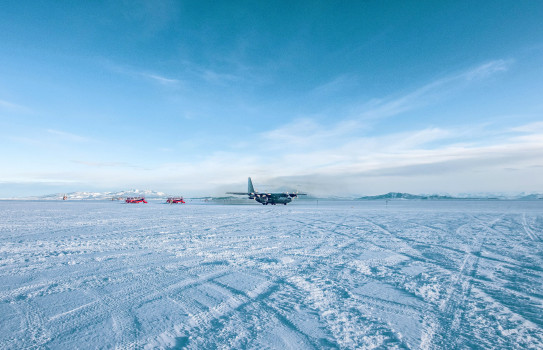
Navy skills shared with Samoa
The Royal New Zealand Navy has been sharing its expertise this year with Samoa's Maritime Police in the build-up to Samoa receiving its new patrol vessel, Nafanua III. On shore, a bespoke Maritime Training Team, from the Navy's Maritime Training Group, provided general maritime training to 32 Samoan Maritime Police officers.
The week-long course included medical training, search and rescue, planning and boarding and ladder drills.
HMNZS Taupo was already in the vicinity, undertaking a 967-nautical mile maritime security and fisheries patrol of Samoa's Exclusive Economic Zone (EEZ) to deter illegal, unreported and unregulated (IUU) fishing. The voyage was the furthest north in latitude and the furthest travelled for an Inshore Patrol Vessel since the commissioning of the Lake-class vessels in 2009.
Partway through the patrols, Taupo called in to Samoa to take aboard Samoan personnel, keen to put their training into use. Taupo crewmembers, making room for the police, joined a Navy logistics team on shore in community projects and sports events.
Operation Calypso is one of several maritime resource protection operations that the New Zealand Defence Force carries out each year via the air and sea, supporting the Forum Fisheries Agency, Pacific Quadrilateral Defence Coordination Group, the Ministry for Primary Industries and at the direct request of Pacific nation Governments.
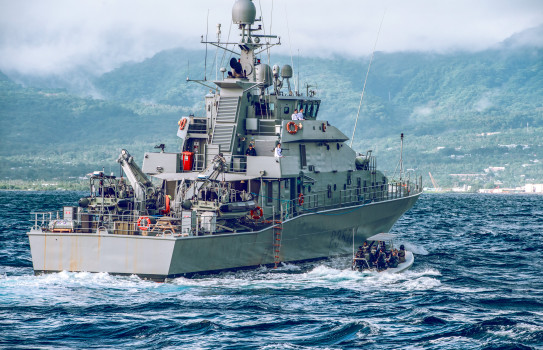
Plan ANZAC
In April the New Zealand Army reinvigorated its longstanding cooperation with the Australian Army with the signing of Plan ANZAC.
The Bilateral Service Cooperation Plan creates a formalised framework for many well-established work streams between the two armies, including sustained cooperation across strategic engagement, capability, training, readiness and common personnel issues.
The plan balances the enduring characteristics of the Anzac relationship, such as close integration in capability, training and readiness; and retention of sovereign capability and capacity to act in support of independent Joint Force operations.
Hailed as a significant step forward for the trans-Tasman strategic partnership, the plan has a focus on improved interoperability.
Another key outcome of the plan is that both nations will cooperate to support common objectives for broader interoperability and standards as members of the American, British, Canadian, Australian and New Zealand Armies' Programme.
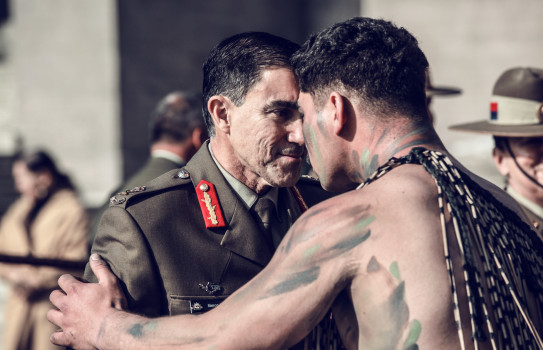
Amphibious capability proven in Fiji
During March and April HMNZS Canterbury and NZ Army's 5th Movements Company supported Exercise Mahi Tahi, which involved working alongside Fijian military to train personnel in amphibious operations and humanitarian and disaster relief work.
The ship transported nearly three hundred NZDF personnel, two NH90s helicopters, eight trucks and one fuel tanker to Fiji. Canterbury acted as a Pacific Island lilypad' for flying operations, while its landing craft conducted beach landing operations at Lomolomo Beach on the coast of Viti Levu.
We haven't practised this type of amphibious landing for a while and this is the first time we've used both the BPEV and CAT938K overseas so it's really great to see it deployed here at Lomolomo Beach.
It included the first-time drive onto a Pacific Island for the Army's Beach Preparation Extraction Vehicle (BPEV) which can be used to help prepare the beach by clearing any debris such as logs or boulders, smoothing it out for other vehicles to land ashore.
Accompanying it was the Army's modified 20-tonne CAT938K loader with a FAUN trackway dispenser attached to the front. It can roll out a modular aluminium trackway, 40 metres long, from the landing craft, to support trucks driving on a beach.
The teams extracted 107 3rd Battalion Fiji Regiment soldiers from Kadavu Island using the ship's landing craft, transporting them to Suva. It demonstrated what the Defence Force can do if they have to extract large numbers of people.
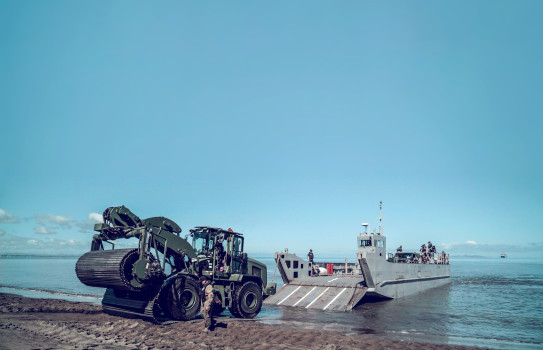
Record delivery traps for conservation
In September the Royal New Zealand Air Force's No.3 Squadron delivered more than four tonnes of pest traps into the lower North Island's Ruahine Range, the largest one-day back country delivery of traps in New Zealand conservation history.
The work supported the Department of Conservation - Te Papa Atawhai (DOC) and its pest control operations following the damage caused by Tropical Cyclone Gabrielle.
The NH90 helicopter and crew delivered 560 traps, weighing 4,400 kilograms. These traps, which target stoats, weasels and rats, will make a significant contribution to the protection of kiwi, whio (blue duck), robins, snails and rare plants.
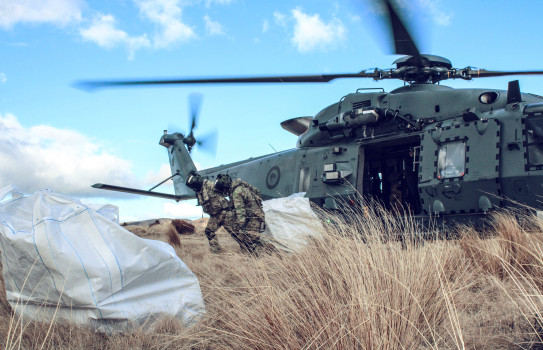
Conservation and science on offshore islands
Over January and February, HMNZS Canterbury tackled back-to-back conservation and resupply missions at two ends of New Zealand's territory: the sub-tropical Kermadec Islands and sub-Antarctic Islands.
Operation Havre focused on resupply, conservation and maintainance tasks on Rangitahua/Raoul Island over 12 days with the Department of Conservation (DOC), Meteorological Service NZ (MetService), Geological Nuclear Sciences (GNS) and mana whenua from Northland iwi, Ngati Kuri.
Operation Endurance, on Campbell Island, included the Defence Technology Agency testing experimental weather stations, NZ Army researching future helicopter landing sites and staff and students from the Sir Peter Blake Trust, alongside Otago University staff, analysing peat and sediment layers.
Endurance's programme had to be drastically condensed, with Canterbury recalled to Lyttelton to respond to Cyclone Gabrielle taskings.
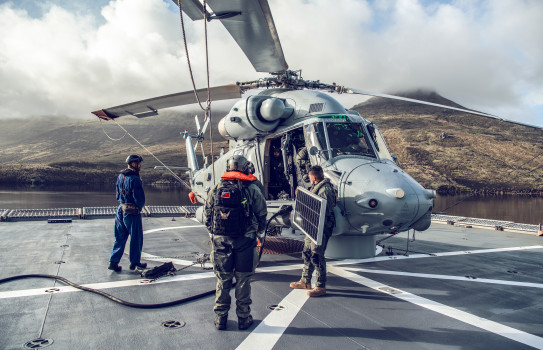
Specialist boarding teams
Bespoke, short-notice Deployable Boarding Teams (DBT) are being developed as a specialist capability out of littoral warfare unit HMNZS Matataua.
Personnel across the Royal New Zealand Navy can undertake a five-week boarding team course, learning critical incident management, tactical communications, firearm training, advanced first aid, room clearing, search techniques and ladder skills.
Typically these persons arrive from different ships and units and disperse back to them, which means that RNZN boarding parties become platform-centric, associated with a particular ship for a particular period.
In order to prepare that ship for patrols that involve boarding other vessels, the entire ship has to be 'worked-up' for an operation - a costly endeavour in personnel, training and overheads.
Under this new concept, Matataua will provide a scalable, fully-equipped and qualified boarding capability, available at short notice for "fly-in, fly out" deployments to support a RNZN ship on operation, or the vessels of partner nations.
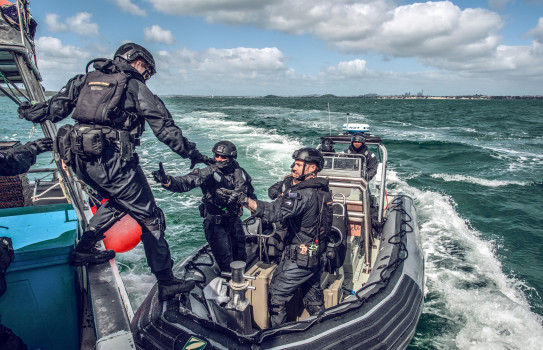
King's Coronation
In front of the eyes of the world, a 20-strong New Zealand Defence Force contingent marched through central London as part of the historic Coronation of His Majesty King Charles III on May 6.
The New Zealand contingent marched alongside members of the UK Armed Forces and personnel from across the Commonwealth in the return processions from Westminster Abbey to Buckingham Palace. More than 7,000 personnel from 40 nations were involved in the spectacle.
